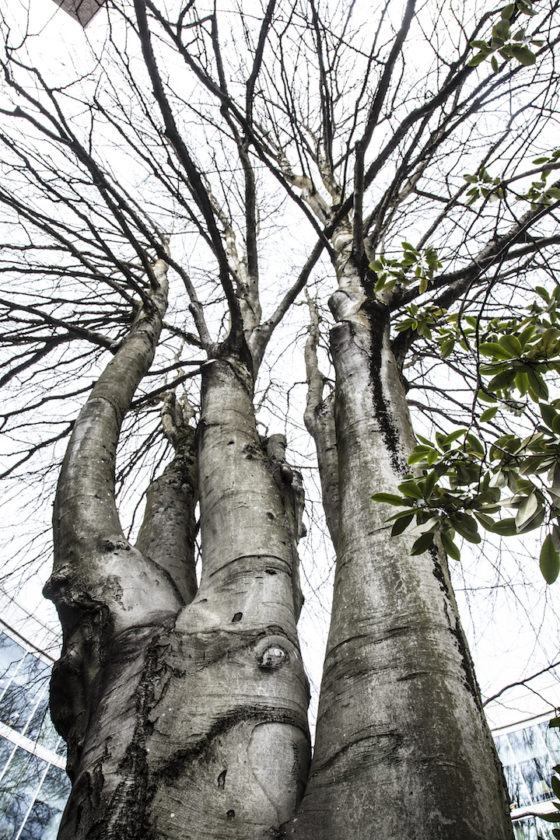Portland has nearly 300 officially recognized historic trees, termed Heritage Trees by the City Council. Portland Parks and Recreation manages the program. According to PP&R, the trees are “formally recognized…for their unique size, age, historical or horticultural significance.” Portland’s Trees of Merit are not officially recognized as Heritage Trees, but still notable and historic species.
If you want to experience Portland’s natural history or are simply curious why they’re so significant, here’s a sample of some of our most important native trees.
The 80-foot tall copper beech in front of Portland State’s Millar Library is a Heritage Tree planted in 1892. The library was built to surround the tree with its convex glass wall.
Portland’s first Heritage Tree is the Burrell Elm. It was planted in 1870 and stands approximately 78 feet tall. The width between the widest branches is over 105 feet, stretching over the sidewalk and nearby buildings. American elms tend to have distinct vase-shaped trunks with arching branches and a rounded top. It’s near campus on SW 10th Avenue in front of the YMCA.
In southwest Portland stands a yellow bellflower apple, “the oldest grafted fruit tree on the west coast and the oldest apple tree in Oregon,” according to The Heritage Tree Program Guidebook. The tree was first planted on a homestead in 1850 and later purchased by a nursery in Milwaukie. It is currently located on SW Campbell Ct. off of SW Sunset Blvd.
The tallest tree in Portland is a native Douglas fir, estimated to be between 300 and 450 years old and stood 242 feet tall when last measured in 1997. The tree can be found in Lower Macleay Park off the stream side trail toward Balch Creek, 100 yards before the Stone House.
Previously thought to be extinct, Dawn redwoods currently grow in Hoyt Arboretum and Laurelhurst Park. “Seeds and cones…were brought to the United States from China by Harvard researchers in the ‘40s and distributed to various arboreta around the country,” said Friends of Trees’ Andy Meeks.
Hoyt Arboretum was one of these recipients. The young trees grew successfully—they now stand 103 feet tall—and became, according to Meeks, “the first dawn redwoods to bear cones in the Western Hemisphere in 16 million years.”
In a past Portland State history course led by Associate Professor Catherine McNeur, students developed projects that allowed the public to engage with the history of Heritage Trees, seeking to make the trees’ history of accessible to a broader audience.
For more information on Heritage Trees, check out the extensive guidebook, podcasts, mobile app, coloring pages, trading cards and mapped walking tour at pdx.edu/history/heritage-trees.






